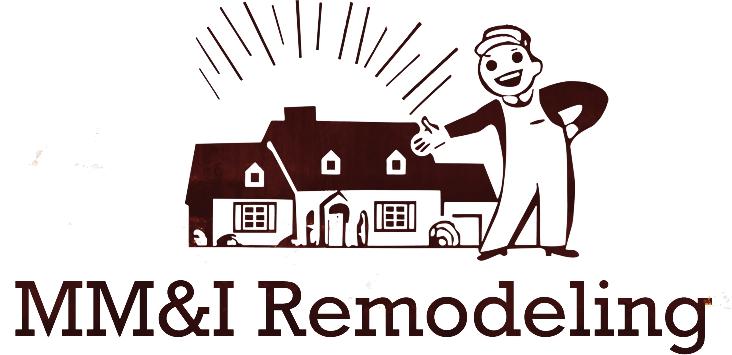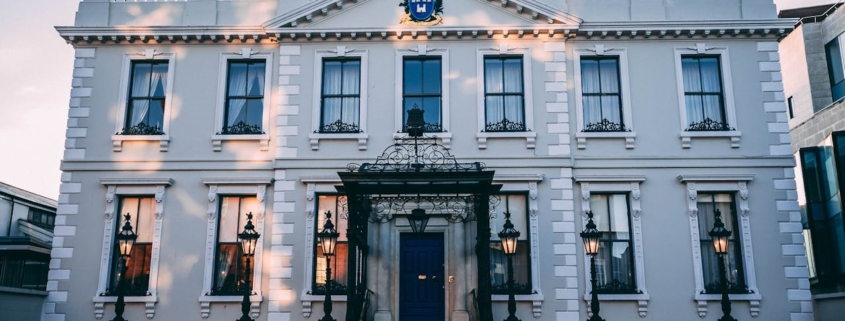Renovating Historic Homes: Preserving Architectural Integrity while Modernizing Interiors
*****Thank you to the talented writing team of Mary Aspen Richardson for this month’s blog post.*********
Alt-tag: White, two-story building under a blue sky.
Renovating historic homes presents a delicate balance between preserving their architectural
integrity and updating them for modern living. It’s a journey that requires respect for the past
while embracing the conveniences of the present. With careful planning and attention to detail,
homeowners can honor the unique character of their historic property while ensuring it meets
contemporary standards.
Renovating Historic Homes: Understanding Architectural Integrity
Architectural integrity encompasses the distinctive features and craftsmanship of a historic home,
reflecting the era in which it was built. These may include ornate moldings, original woodwork, and intricate detailing that define its character. Preserving these elements maintains the authenticity and historical value of the property.
Furthermore, architectural integrity extends beyond surface-level aesthetics to encompass the structural integrity and craftsmanship that contribute to the home’s overall character. It involves understanding the building’s evolution over
time, including any additions or modifications, and striving to retain its original essence while accommodating modern needs.
Challenges of Modernization
Modernizing the interior of a historic home poses challenges such as outdated infrastructure,
inefficient layouts, and incompatible building materials. Balancing the desire for modern
amenities with the need to retain the home’s original charm requires thoughtful planning and
expertise. Additionally, navigating regulatory requirements and preservation guidelines adds
complexity to the modernization process, requiring careful consideration of how to harmonize
contemporary updates with historical significance.
Researching Historical Context
Before embarking on renovations, it’s crucial to research the historical context of the home.
Understanding its architectural style, period-specific features, and significant alterations over
time informs renovation decisions. Furthermore, delving into the historical context provides
homeowners with a deeper appreciation for the narrative behind their property, fostering a
stronger connection to its heritage. This research can uncover fascinating stories about previous
occupants, architectural trends of the era, and the local community’s development, enriching the
renovation process with a sense of place and belonging.
Alt-tag: Brown carriage wheel.
Caption: When it comes to renovating historic homes, it’s crucial to research the historical context of the home.
Preservation Through Restoration
Restoration involves returning a historic home to its original condition by repairing or recreating
original features using period-appropriate materials and techniques. This approach preserves the
authenticity and charm of the property. Restoration is especially crucial in communities like Fair
Oaks Ranch, where historic preservation is a cornerstone of the town’s identity. In such areas,
maintaining the integrity of historic homes is not just a matter of personal preference but a
responsibility to uphold the heritage of the community. When it comes to transporting preserved
items to storage during restoration projects, movers in Fair Oaks Ranch play a vital role. Their
expertise ensures that delicate and valuable artifacts are handled with the utmost care,
minimizing the risk of damage or deterioration.
Working with Preservation Guidelines
Many historic homes are subject to preservation guidelines and regulations to safeguard their
architectural heritage. Working with preservation boards and experts ensures renovations comply
with these standards while achieving the desired modernization. Collaborating with preservation
boards and experts ensures compliance with regulations and offers valuable insights and
resources for navigating the complexities of historic renovation. These professionals possess in-
depth knowledge of local history, architectural styles, and preservation techniques, allowing
homeowners to make informed decisions that respect the unique character of their property. By
embracing these guidelines, homeowners contribute to the broader effort of preserving cultural
heritage and maintaining the character of their communities for future generations to enjoy.
Adapting Spaces for Modern Living
Adapting historic spaces to meet modern lifestyle needs often involves reconfiguring layouts and
integrating contemporary amenities. Thoughtful design solutions can blend old and new
seamlessly, enhancing livability without compromising architectural integrity. In addition to
intelligent design solutions, enlisting the expertise of professional furniture movers such as Pro Alliance Services San Antonio can significantly streamline the process of integrating modern
features into historic spaces. Professional movers are equipped with specialized tools and
techniques to handle delicate materials and navigate challenging spaces with precision,
ultimately safeguarding both the home’s structural integrity and the furniture’s condition.
Incorporating Sustainable Practices
Renovating historic homes presents an opportunity to incorporate sustainable practices that
respect the environment and the home’s heritage. Strategies such as energy-efficient upgrades and salvaging materials minimize environmental impact while preserving history. In addition to energy-efficient upgrades and material salvaging, incorporating sustainable practices in historic renovations can also involve:
● Implementing water-saving fixtures.
● Utilizing non-toxic paints and finishes.
● Integrating passive design principles to optimize natural lighting and ventilation.
These practices not only reduce the ecological footprint of the renovation but also enhance the
overall health and well-being of occupants while honoring the legacy of the home.
Alt-tag: Person’s hand holding green leaf plant.
Caption: Renovating historic homes presents an opportunity to incorporate sustainable practices that respect both the environment and the home’s heritage.
Selecting Sympathetic Materials and Finishes
Choosing materials and finishes that complement the historic character of the home is essential
for maintaining its integrity. Opting for sympathetic materials that mimic original textures and
colors ensures a cohesive and authentic aesthetic. Furthermore, selecting sympathetic materials
and finishes involves considering their durability and longevity to ensure they withstand the test
of time in a historical setting. Additionally, consulting with preservation specialists or historical
architects can provide valuable insights into the most appropriate materials and finishes for
specific architectural styles and periods, further enhancing the authenticity of the renovation.
Preserving Exterior Features
The exterior of a historic home is often its most recognizable aspect, featuring distinctive
architectural elements and period-specific details. Preserving these features through careful
maintenance and restoration is essential for retaining the home’s character and curb appeal. Not
to mention that preserving exterior features not only maintains the property’s aesthetic appeal but also contributes to the overall value of the neighborhood by retaining its historical integrity. It also serves as a tangible link to the past, offering a glimpse into the architectural trends and craftsmanship of bygone eras for current and future generations to appreciate.
Conclusion
Renovating historic homes is a labor of love that requires a delicate balance between
preservation and modernization. By understanding the property’s architectural integrity,
researching its historical context, and working within preservation guidelines, homeowners can
ensure renovations honor the past while embracing the future. With thoughtful design,
sustainable practices, and a commitment to preserving the unique character of these homes, they
can be enjoyed for generations to come.
Meta Description:
Discover the art of renovating historic homes: balancing modernization with architectural integrity.
Expert tips and insights await!
Keyword:
renovating historic homes
Photos used:
https://www.pexels.com/photo/white-two-story-concrete-building-under-blue-sky-962989/
https://www.pexels.com/photo/brown-carriage-wheel-672630/
https://www.pexels.com/photo/person-s-left-hand-holding-green-leaf-plant-886521/





